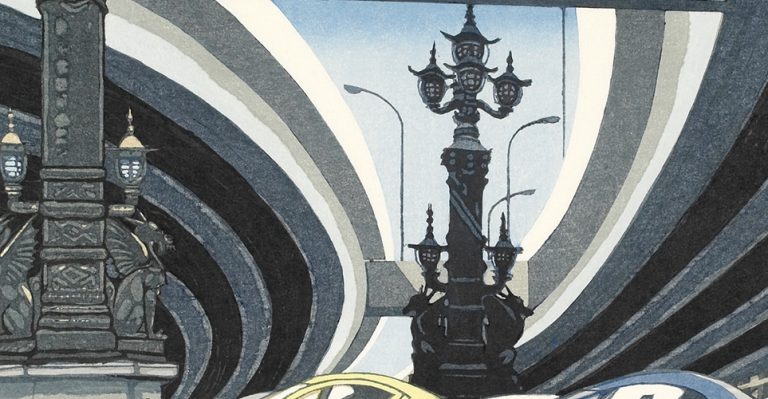Perhaps no city has been more meticulously documented in Japanese woodblock prints than its capital, known as Edo throughout the 17th through the late 19th century. Nevertheless, from 1868, when it was renamed Tokyo, the city’s architecture quickly evolved. After a devastating fire destroyed most of Ginza District in 1872, the Meiji government renovated the area with Georgian brick buildings and a Western-style shopping promenade, all illuminated with gas lamps. The Azuma Bridge that spans the Sumida River was reconstructed as an Art Deco truss bridge in 1887, and two years later, Tokyo Station was designed in a Modernist style that reflected its engineers’ German heritage.
During the 20th century, the pace of Tokyo’s urban renewal intensified in the wake of two cataclysmic events. In the years following the Great Kantō Earthquake of 1923, the Tokyo subway system began operation, the Gothic-style Shisei Kaikan (literally, “municipal hall”) in Hibiya Park was completed, and Tsukiji Honganji Buddhist Temple was reconstructed in a boldly traditional Indian style. Similarly, during Japan’s postwar recovery, Tokyo Tower was erected, and the city was braided with a network of expressways. Though all of these structures radiate a cosmopolitan sensibility, their depiction in the traditional medium of woodblock prints may nevertheless bring to mind the “famous views” of Utagawa Hiroshige (1797–1858) and other landscape artists of the 19th century.
